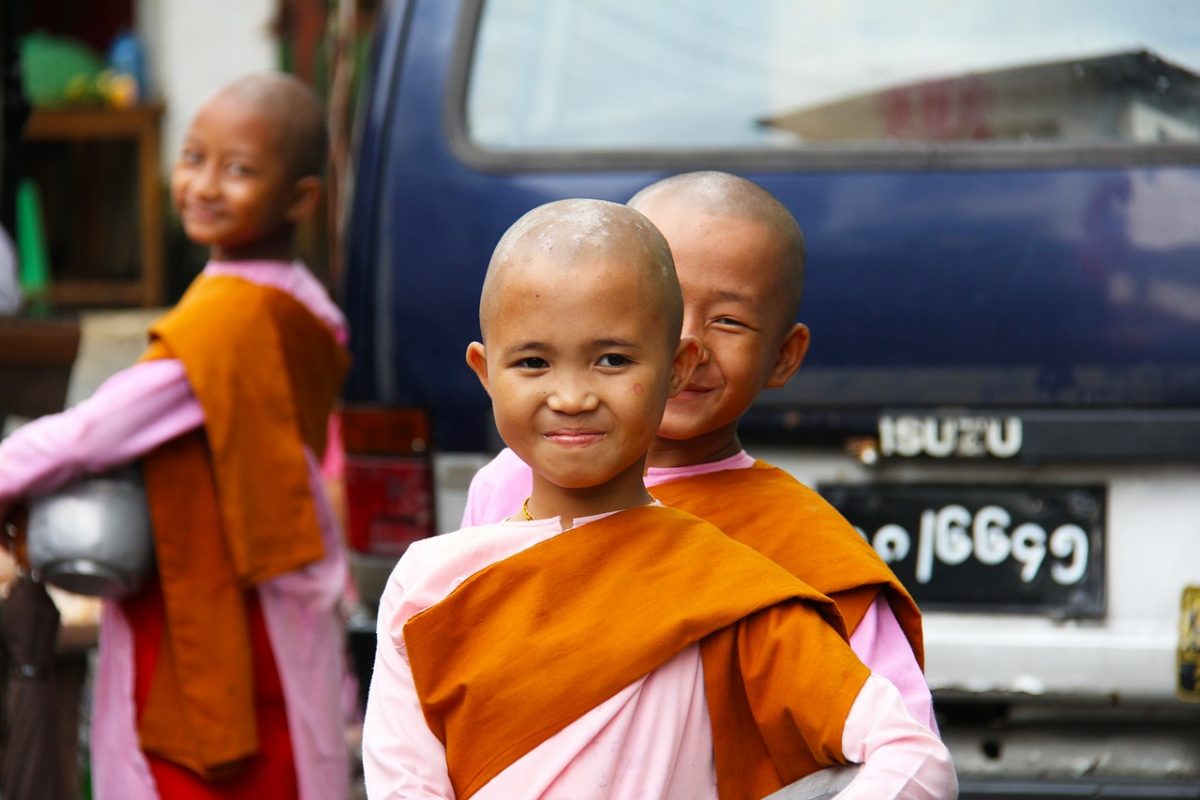The city is an amalgamation of British, Burmese, Chinese and Indian influences, and is known for its colonial architecture, which although decaying and beyond appreciation, remains an almost unique example of a 19th-century British colonial capital. New high-rise buildings were constructed from the 1990s (and some are scarily unoccupied and left as ghost skyscrapers and hotels as seen along Upper Pansodan Rd) as the government began to allow private investment (while former national government buildings such as the massive Secretariat Building, as the capital is shifted to Naypyidaw, have been left to rot). However, Yangon continues to be a city of the past, as seen by its longyi-wearing, betel nut chewing and spitting pedestrians, their friendly or even familial attitude towards strangers, its street vendors and its pungent smells.
Yangon’s former name is not the only victim of symbolic changes in this country. For one, the country’s name has been changed. To add up to this identity crisis going on in this country, this city has been stripped of its capital status, the capital relocated to a secluded new site called Naypyidaw built from scratch. The flag too has been changed, recently redesigned in 2010, replacing the old one which replaced another one slightly more than a decade earlier.
Maybe because Myanmar had traumatic encounters with foreigners as far back as the Mongol invasion when it sacked the city of Bagan, the colonization by the British and invasion by the Japanese as well as the brutal cruelties inflicted by them – it developed its idiosyncrasy and to the point isolationist behavior towards foreigners, but it is not as totally xenophobic as North Korea. As Buddhists, Myanmar people are kind and welcoming to any stranger as any guest. As long as that guest-stranger does not impose something to his lifestyle, it’s OK. Somehow, they don’t want to fully and sweepingly adapt to any foreign idea. That said, the history of Myanmar has its own empires, including the complete destruction of Ayuthaya which crushed the Siamese and from which they did not recover for a hundred years.
Their bit of contempt was manifested in condoning the government to practice impositions on foreigners such as a tight grip on the Internet as well as the hotel TV – indispensable gadgets by tourists to the outside world in their everyday lives here and in their hometown; requiring foreigners to register and log their particulars every step of the way from every hotel down to the museum they’ve been, and in every mode of transport they use. Not to mention that any local who billeted a foreigner in his house overnight was long perceived by the community as an indiscretion and subject to imprisonment. Attitudes are changing rapidly, however, as a result of the government’s increasing openness to foreign trade and movements towards democracy. As of November, 2013 the situation is significantly changed with far less regulation over foreign tourists and an exponential growth in technology like smart-phones and tablets, Internet access and international television. Visitors in February 2014 have noticed no restrictions on Internet and no need to log trip details.
Yangon is the most exotic of all Southeast Asian cities. A walk down a typical street, the sights show noticeable commercial and traffic signs written mostly in local alphabet, not to mention the appearance of wandering monks in burgundy robes and the gilded pagodas as this is expected in this Buddhist country, and down to the locals keeping up their appearances. Here, everyone seemed to be comfortable with walking barefoot – indoors or outdoors; with faces applied with sun protection cream from the extracts of a tree branch called Thanaka; smiles reddened by bloody red juice from chewing betel nut; as well as being used to images of men wearing a sarong-like garment, the longyi.



